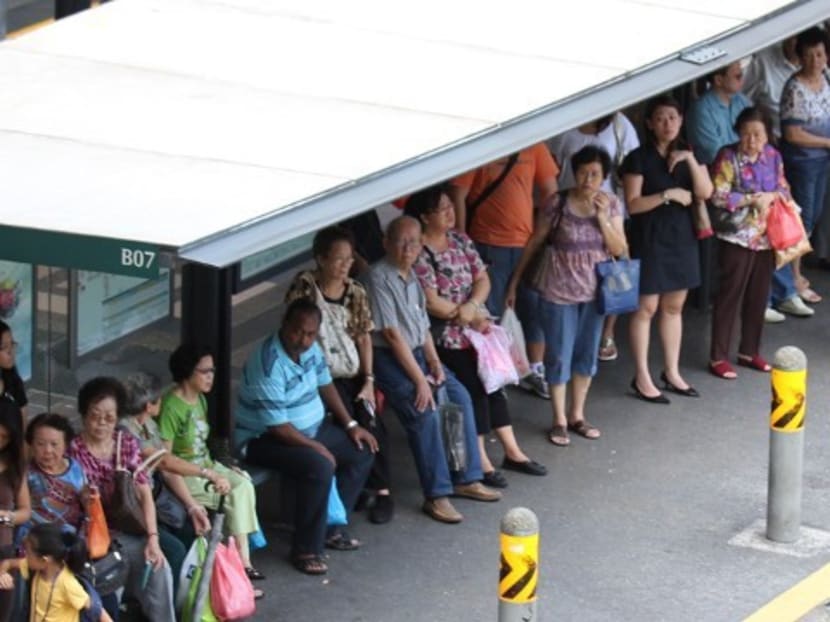Moving beyond bus contracting model to improve service
“I don’t take the bus. It’s not reliable and I often need to wait 20 minutes,” a potential bus commuter here related recently. This sums up the issues bus operators need to address. Commuters want a schedule they can rely upon, frequent service and enough space to board the bus when one shows up.
“I don’t take the bus. It’s not reliable and I often need to wait 20 minutes,” a potential bus commuter here related recently. This sums up the issues bus operators need to address. Commuters want a schedule they can rely upon, frequent service and enough space to board the bus when one shows up.
It is unclear whether these will be met by the Land Transport Authority’s (LTA) setting up of a new government contracting model in which bus services will be bundled into 12 packages to be tendered out to operators. Three tenders will start in the second half of this year.
The focus for contracted services seems to be on how routes and companies will be managed.
The LTA did say the new model would be more responsive to changes in ridership and commuter needs and that it would raise service levels for commuters over time.
But it is unclear how exactly contracted companies will achieve higher service standards, including ensuring that buses arrive at intervals of no more than 15 minutes during the morning and evening peak periods, with at least half of the bus services having even shorter intervals of no more than 10 minutes.
Rather than focusing on a business model that worked well elsewhere, it is time to focus on making three changes that will actually improve service levels.
RATIONALISING ROUTES AND BUS TYPES
The first is to analyse current bus routes and shorten them. Research by National University of Singapore (NUS) Professor Lee Der-Horng and his colleagues showed that unreliability rises linearly with increasing travel distances, meaning that bus services are more reliable if routes are shorter.
Future Cities Laboratory senior researcher Alex Erath similarly found in recent studies on bus systems here that splitting a long bus route into two parts can potentially increase reliability by 35 per cent.
One solution that would increase bus frequency at low cost, NUS Professor Paul Barter explained, is to shift to a hub-and-spoke network layout whereby buses use shorter routes to take commuters to an interchange where they can connect to a bus or train on another shorter route.
Revising routes and doing more to focus on the hub-and-spoke strategy to optimise travel time, before contracting for the routes rather than afterwards, could improve bus reliability.
Second, bus companies need to put enough of the right kind of buses on the road. To be sure, the 800 new buses planned under the Bus Service Enhancement Programme will help. More than just putting buses on the road, selecting the right kind of buses is important.
Dr Erath also found that having one more door on the bus would make alighting 1.86 times faster, speeding up buses significantly, especially during peak hours.
BENEFITS OF A SCHEDULE
Finally, bus companies should be required to publish actual arrival schedules for every route. The schedules published by SBS Transit today only indicate that buses are supposed to arrive within five minutes before or after the scheduled time, so commuters cannot plan to arrive just in time to get on the bus, as is the case in other cities.
Using a bus app and finding that a bus is arriving, with the next one coming in 15 to 20 minutes, does not solve the problem.
While the LTA said its new S$68 million intelligent bus management system will help with operations control, fleet management, passenger information and business management, it seems designed to show how many minutes away a bus is rather than to set up a reliable bus schedule.
London, New York, Tokyo and other cities large and small around the world with traffic congestion sometimes worse than Singapore have been able to publish bus schedules. While bus services are not perfect elsewhere, commuters can usually rely on the schedule and know when a bus will show up. A really intelligent system should provide a similar schedule and give confidence to commuters here.
Along with a schedule for commuters, it is important for bus drivers to know their schedule for each stop. Dr Erath noted that major cities such as Zurich and London give drivers information on their schedule using on-board displays, with the units also feeding the bus position back to a traffic control centre.
What needs to be done beyond a new bus contracting model is clear. Experts have provided the direction that is needed and shown how better practices can benefit consumers.
Planning routes better before allocating them, buying buses that will improve boarding duration and designing accurate schedules rather than only telling how many minutes away the bus is are what commuters need the most.
It is time to get back to basics so that more commuters say: “I do take the bus.”
ABOUT THE AUTHOR:
Richard Hartung is a consultant who has lived in Singapore since 1992 and who regularly commutes to work by bus.







